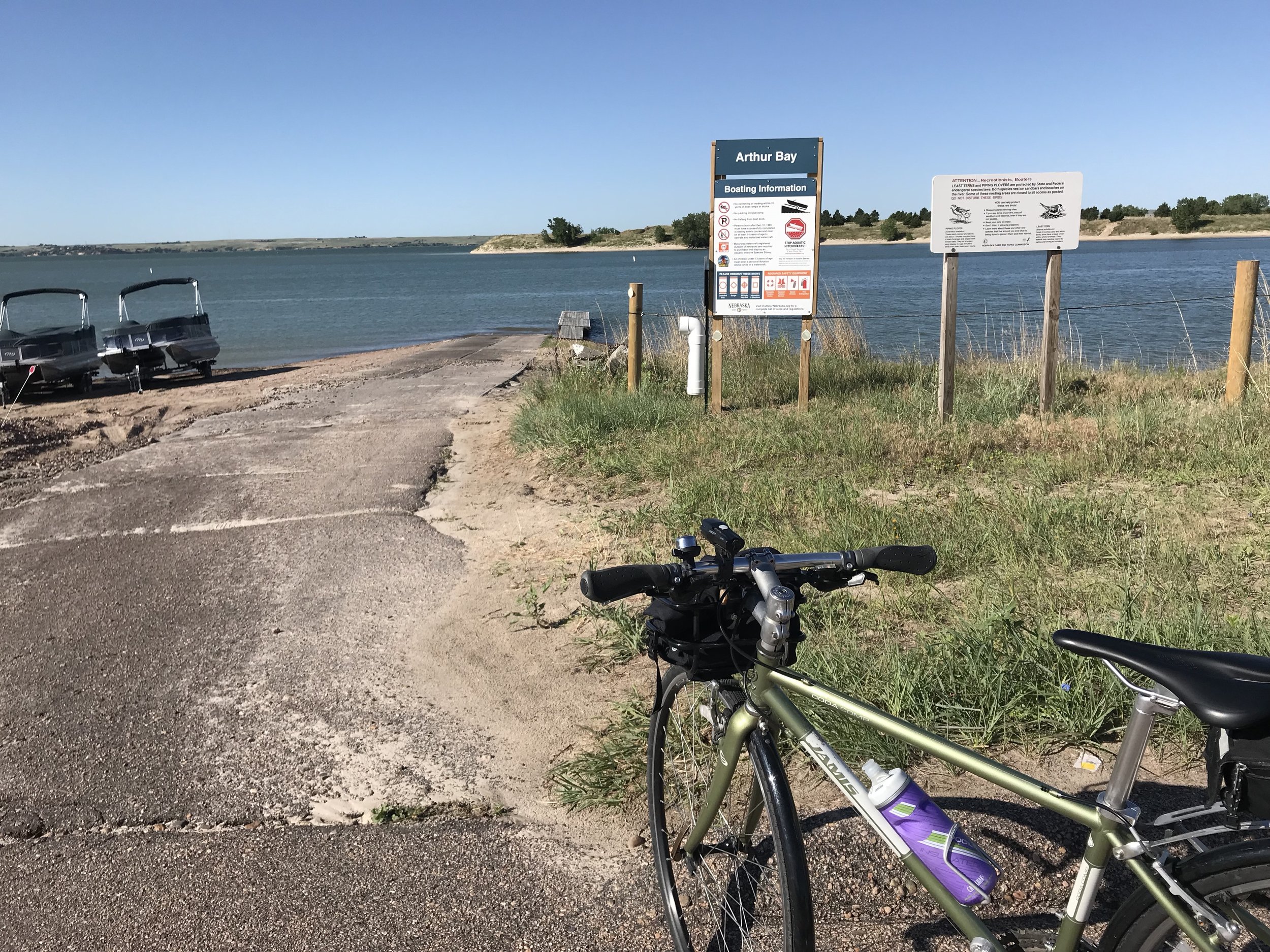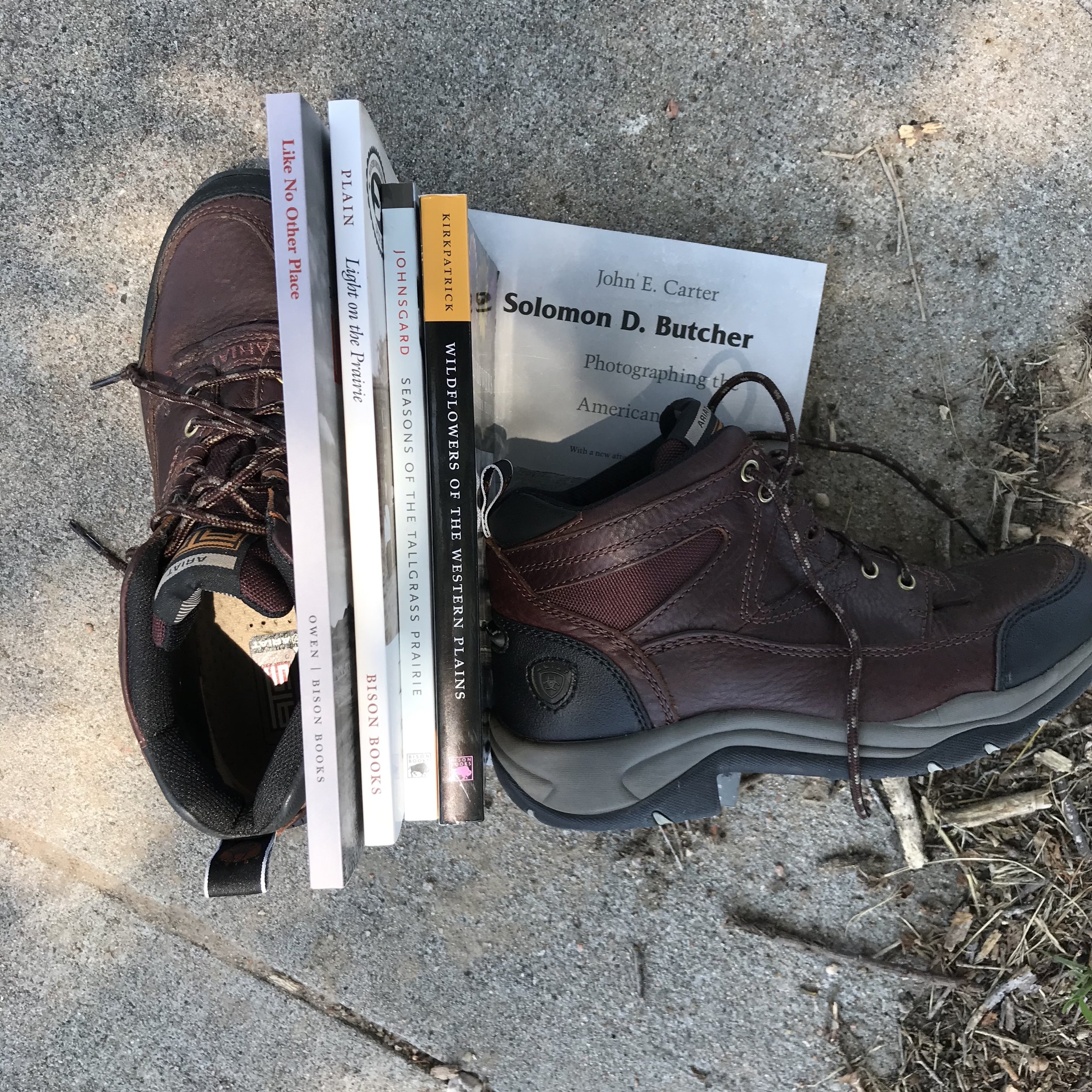One of the great things about participating in an artist residency is meeting other artists. Learning how they approach their subjects, what questions drive them, how they manipulate their materials to tell their stories help me examine my own methods, materials and media.
During my two weeks at the Cedar Point Biological Station, I spent time with three other artists who are doing really interesting work.
Jennifer Bockerman and I shared studio space for several days. She worked on large mixed media pieces on paper as I painted. After leaving Cedar Point, she spent a week in New York City with the Art21 Summer Institute for educators and then went back to Cedar Point for another week. She teaches art to middle-school students in Lincoln, Neb., and helps lead international trips through EFTours.
Sophia Ruppert created a table-top sculpture using parts of yucca plants and also cast plaster figures during her time at Cedar Point. We spent a foggy morning gathering fringed sage, also called prairie sagewort, (artemisia frigida) to tie into fragrant bundles. She’s completing her MFA at University of Nebraska-Lincoln next year and expects her thesis show to examine gender roles and family narratives.
Anne Yoncha worked on a large pencil drawing of prairie plants highlighted with ink she made from red cedar needles, and we spent several evenings watching sunsets and storms move across the open landscape. After recently completing her MFA at the University of Montana, she’s off to spend a year in Finland on a Fulbright grant.
I’m looking forward to following all these young women as they further their careers!
Anne and I photographed this sunset as it painted the sky after a storm moved through














